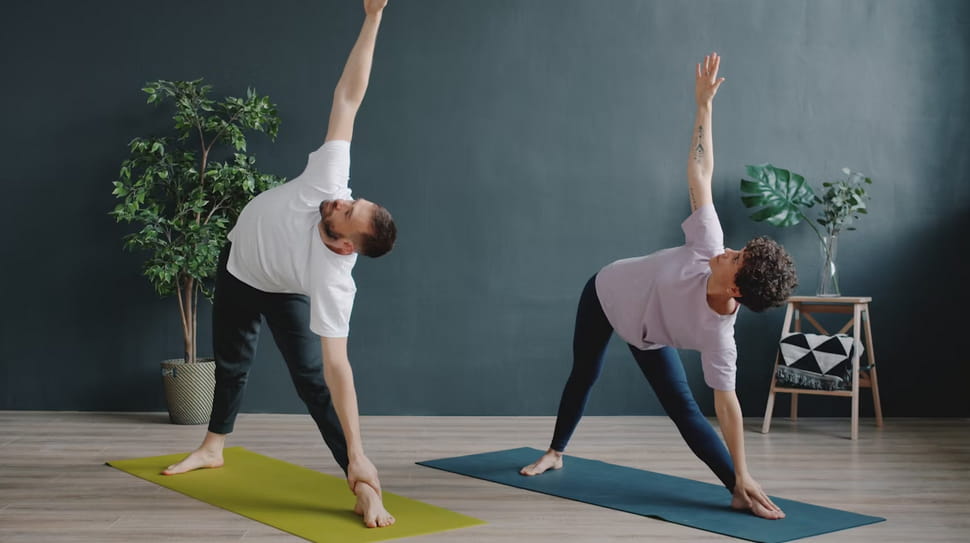The Key to a Clearer, Calmer Mind
Mental clarity: what does this buzzword of the wellness world really mean? And more importantly, how do you actually achieve it? If you feel your mind is cluttered with distractions, and you're struggling to focus on what really matters, you're not alone.
Most people have a hard time achieving mental clarity and inner peace. Between constant thoughts, distractions, and a hectic lifestyle… It's no wonder we're all a little brain foggy sometimes.
But here's the good news.
With mindfulness and wellness practices, you can significantly improve mental clarity. And it happens much more quickly than you'd expect.
In This Article:
- The Truth About Mental Clarity
- Mindfulness Changes Your Brain
- Top Wellness Practices for Clarity
- Establishing Lasting Wellness Habits
- Mental Clarity Obstacles & Solutions
- Mindfulness & Wellness FAQs
Ready to jump in?
Let's go.
What Mental Clarity Really Means
So what exactly is mental clarity?
Think of mental clarity as being able to think and process information quickly and efficiently. Your thoughts are clear, focused, and directed. You can make decisions easily and don't feel "fuzzy" in your head.
Mental clarity also means having a sense of inner peace. Your mind isn't constantly jumping from one thing to the next. You can relax and enjoy moments of silence.
The problem is, most of us struggle with mental clarity on some level. Whether it's from anxiety, stress, or simply having too much on our plates. Life in the modern world is very unforgiving when it comes to your mental wellness.
That's why mindfulness practices are so powerful.
Programs like Mindful Journey Wellness Center help people develop the practical skills needed for mental clarity and inner peace. With personalized wellness approaches, these coaches work with clients on an individual basis to create strategies and habits that work for them.
The Science Behind Mindfulness & Mental Clarity
Let me show you something…
In one recent study, scientists found that 10 minutes of daily mindfulness practice significantly increased wellbeing. What's more, the research also showed it had a 19.2% reduction in depression. That's huge.
But wait, there's more.
Amazingly, the practice of meditation is now spreading across the US. One study showed a dramatic 18.3% of American adults now practice meditation regularly. That's over 60 million people!
Okay, so what's happening in your brain?
It turns out when you practice mindfulness, your brain physically changes. It creates stronger connections in key areas such as focus and attention. Emotion regulation, memory and learning, and the stress response system.
Mindfulness is no magic spell. It's a proven method that literally trains your brain to function better. Kind of like going to the gym, but for your mental state.
Top Wellness Practices For Mental Clarity
So what practices can you start right now to support mental clarity? I'll show you…
The good news is they're nothing crazy or complicated. These are simple wellness practices you can build into your daily routine.
Daily Mindfulness Meditation
Ok, this is the big one.
Mindfulness meditation is the cornerstone of mental clarity. It helps you build the skills of awareness and focus. So every morning start with just 5-10 minutes of meditation.
Find a quiet place. Sit down or lie down comfortably. Close your eyes and just focus on your breathing. When thoughts come up (and they will), simply observe them and let them pass.
That's it. No equipment or special posture needed.
Body Scan Awareness
Feeling out of touch with your body? A body scan can help.
Lie down and start at your toes. Slowly bring your awareness up through your body. Observe any tension, pain, or sensation as you move up. Don't try to change anything, just notice it.
Practicing a body scan builds awareness of the physical effects of stress. And awareness is the first step to letting it go.
Mindful Movement Practices
Not a fan of sitting still? No problem.
Physical movement can also be a form of mindfulness practice. Try yoga, tai chi, or just simple mindful walking. The key is to focus on how your body feels as you move.
Allow yourself to be fully present with the movement. Don't let your mind wander on autopilot.
These practices have the added benefit of combining physical and mental wellness.
Breath Work Techniques
Okay, this one you may not have heard about.
Breathwork is one of the fastest ways to change your mental state. When stressed, your breathing is shallow and fast. When calm, it's slow and deep.
You can hack this process on purpose. By changing your breathing, you change your mental state.
Want to try a simple technique?
- Inhale for 4 counts
- Hold for 4 counts
- Exhale for 6 counts
- Repeat 5 times
Notice the difference it makes?
Journaling For Mental Clarity
Still got a lot of mental junk floating around?
Grab a pen and journal. Journalling is an excellent way to clear out mental clutter. By writing down your thoughts, you can process them. Identify patterns and get some much-needed perspective.
Spend 10 minutes at the end of each day journaling. Write about whatever you want. No rules. Just let it flow onto the paper.
Building A Lasting Wellness Routine
Look, we all know that starting is easy.
The real challenge is creating lasting change.
The key to a sustainable mental clarity practice is consistency in small, daily habits. Here's how:
- Start small: Begin with 5 minutes of meditation, then gradually increase.
- Be consistent: Set a specific time and place every day for your practice.
- Track your progress: Notice the improvements in your focus, mood, and stress levels.
- Get support: Working with a coach can make all the difference. They hold you accountable and customize practices for you.
It's the people who don't give up that win the game. Keep showing up, day after day, and you'll be amazed at what you can achieve. Especially after 30 days of regular mindfulness practice. After 90 days, mindfulness becomes who you are.
Overcoming Mental Clarity Obstacles
I want to tell you about some of the common challenges people face:
- "I don't have time." Okay, but you do have time to scroll social media or watch Netflix. Time is about priorities.
- "My mind is always racing." That's normal. It's not about stopping thoughts but learning to observe them without attachment.
- "I'm not doing it right." There is no right way. If you're showing up and putting in the effort, you're on the right path.
- "I don't feel different." This is the slow game. Keep at it. The effects compound over time.
The successful ones are the people who persevere. They realize that mindfulness is a journey, not a destination.
Mental Clarity and Wellness FAQs
Here are some of the most common questions people have:
- Q: How quickly will I see results? A: It's different for everyone, but many people notice changes within 4 weeks of consistent practice.
- Q: Is there a right time of day to practice? A: Not really. Do it when you can be consistent. Some people prefer morning, others evening.
- Q: Do I need to set goals? A: Setting a goal can help with motivation, but it's not necessary. The goal is to build a lifelong practice of mindfulness.
Mindfulness is the practice of focusing your attention on the present moment. It's not something that happens or doesn't happen. It's a continual practice and process.
Mindfulness can take on different forms throughout the day.
Mental Clarity Mindfulness in Daily Life
Mindfulness isn't something you do for 10 minutes and forget about the rest of the day. You can bring it into every aspect of your life:
- Mindful eating (savor each bite)
- Mindful walking (feel every step)
- Mindful listening (with friends or family)
- Mindful working (focus on one task at a time)
Mindfulness and Mental Clarity Takeaways
Mental clarity and inner peace are both possible.
There is science and data proving this is possible.
The practices are simple and easy enough for anyone to start right now.
You don't need any special tools or hours of free time.
You need:
- 10 minutes a day for mindfulness practice
- Consistency (over time, not intensity)
- Patience (you're rewiring your brain here)
- Support (a coach can help you turbocharge results)
Pick one practice from this list. Start it today. Commit to 30 days. Notice how your life changes. Then, build on that momentum.















